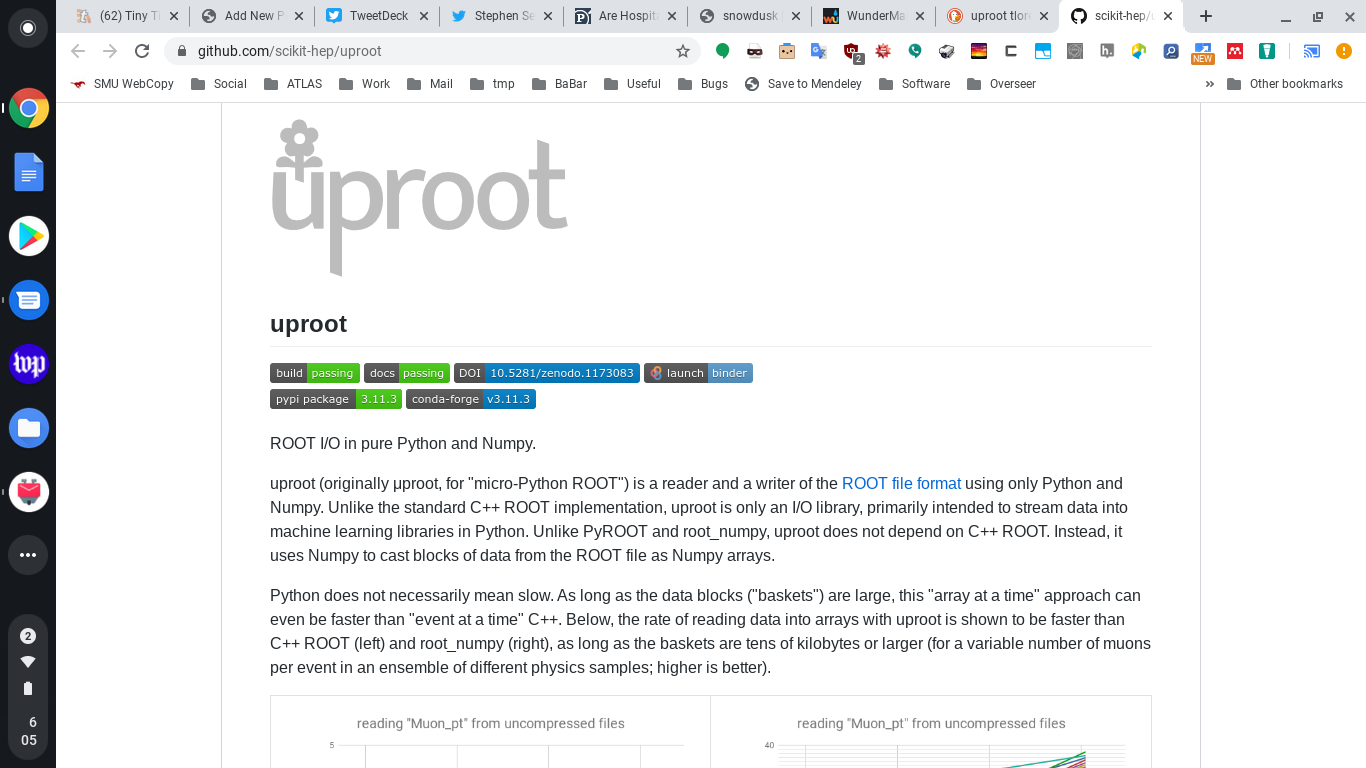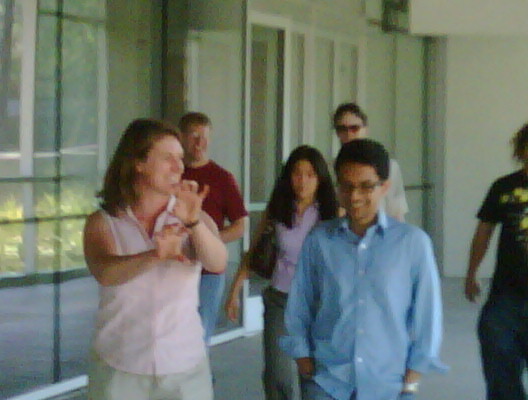Yesterday, Barry Barish (the head of the International Linear Collider Global Design Effort) came to SLAC to deliver the weekly Monday colloquium. I was very excited about this particular colloquium. It’s the first that Mr. Barish has given at SLAC since the GDE cost estimate was completed and made public about a month ago. I was hoping he would review the case for the ILC (which many people my age or younger haven’t really had a chance to hear before), then talk about the challenges to the cost estimate and discuss the actual numbers the GDE published.
When Barry got up to speak, some of the first words out of his mouth were (I paraphrase a little), “This is not the talk I wanted to give.” I got worried. He went on to explain that he had to cut his talk short to accomodate a panel discussion. This panel discussion was apparently imposed from outside, and consisted of leaders in the ILC and HEP funding efforts. Barry gave a 30 minute talk, then yielded the floor so that the panel members (himself included) could sit up front and field questions from the audience.
The fact that Barry, leader of an (underfunded) international design effort and a key player in particle physics, was apparently blind-sided by this panel discussion made me wonder. Why didn’t they let him give a full 60 minute talk and have the panel tomorrow (Tuesday)? The talk was necessarily hurried. Barry quickly breezed through a few examples of how the ILC can improve on Higgs physics, without really getting a chance to go into depth about new physics (non-Higgs or non-Standard Model). He had to assume that we all understood the value of the ILC, and skipped arguments for it beyond these physics slides. He spent more time explaining how the multi-year GDE effort pared the design of the ILC down to two 11km tunnels, with circular damping rings stacked around the interaction point and two detectors which ar in a “push-pull” configuration. “Push-pull” means that each detector gets a fixed amount of time in the collider, and one is pulled back out of the collider while the other is pushed in. One interaction point, two experiments.
The panel discussion worried me more. First, I was the only person under 35 (possibly even 45) that asked a question of the panel. I’m 30 – not the youngest in the room, and I’m already a post-doc worrying like hell about how I am going to do the research needed to one day earn tenure, should I get a faculty job. The ILC seems a practical distraction to me. I would love to do detector or accelerator work for it, but unless I am also working full time on a real experiment with real data, I won’t get the kinds of publications that earn you tenure. For example, the Braidwood Reactor Neutrino Experiment was supposed to be my new experiment, with BaBar my source for data-analysis-based publications. Many other post-docs are in similar positions across the U.S.
Many questions were about avoiding a disaster, or warning that the ILC needs to be prepared to make design changes based on what we learn at the LHC. “How do we avoid an SSC?” one audience member asked. “What’s going on with CLIC?” asked another. Good questions. The ILC is very different from the SSC. It’s international, not slave to any one government’s political whimsy. The GDE is determined to target key physics and thus fix basic design principles in place that can’t change, avoiding the problem the SSC had with controversial re-design choices along the way. The panel addressed this. CLIC is a competing design, driven by European physicists. The panel rightly noted that Europe is too busy with the LHC and LHC upgrades to spend money or time seriously developing CLIC.
My own question was about the issues I mentioned earlier. How do we retain people roughly my age in the field long enough to have them contribute to and operate the ILC? In particular, since ILC work doesn’t now count toward tenure, etc., how you you keep U.S. physicists in the field, producing good work but also developing the critical ILC components? The panel all looked at Abe Seidon, head of the P5 subcommittee of HEPAP (the panel charged with charting the funding envelop and allocation for my field). He answered that we could do what he did. He worked on the SSC, but he also worked on other projects. He worked on LHC, while working on BaBar. I guess he imagined that we could all have projects to work on while also working on the ILC.
Sadly, Mr. Seidon has missed some very important points. FIrst, the program in the U.S. for particle physics is vastly stripped away compared to when he was working on the SSC in the 80’s, or LHC in the 90’s (after SSC was canceled). In the 80’s and 90’s, there were many fixed-target experiments across the U.S. (SLAC, Fermilab, Brookhaven, Jefferson Lab, etc.). In addition, there were compelling collider experiments: Fermilab’s collider, SLAC’s PEP experiments and the SLC, and in the 90’s the B-factory, Tevatron, RHIC, and the CEBAF facility. Times are different now. There is no more fixed target program at almost all the U.S. labs – it largely died in the last 7 years due to choices the labs made for their futures. The B-factory is offline in two years, the Tevatron in three. There is no follow-on for either of those. RHIC is almost gone.
There is no flavor program planned for the U.S. in the next decade. CLEO-c at Cornell will soon shutdown, and B-TeV was canceled (along with RSVP). There will be a neutrino program at Fermilab which most people outside Fermilab don’t find compelling (maybe we need a good colloquium on that one!), and there is no U.S. reactor neutrino program. The LHC will be centered entirely in Europe, with Fermilab attempting to be a Titan to CERN’s Saturn. If you want to do neutrinos, go to Japan, China, or France (we’re told). Want to do collider physics? Go to Japan, China (BES-III), or Europe. That leaves dark matter and dark energy. Here we have a different problem: these are small experiments. You can’t support hundreds of U.S. particle physics on dark matter or dark energy. GLAST is one exception, but there are already a lot of people on that experiment. IceCube could probably support more people, but the number of measurements that it, dark matter, or dark energy experiments can make are limited and cannot support the number of U.S. physicists needed to work eventually on the ILC.
It seems that Sidon’s answer – “do what I did” – worked 20 years ago but cannot in the current U.S. program or tenure climate. How do we keep bright young minds in this field in this country? Do we send them to Europe, Japan, and China and hope they come back? After relocating their families, do you really think they will? Will the university program support those people, even if they could stay part-time in the U.S.? The things HEPAP and P5 want to prioritize, the things that can deliver data in the next 10 years, are largely small-scale experiments which support a few measurements per experiment. How do you satisfy university requirements that Ph.D.’s be unique, independent works? How do young faculty members get tenure when they’re spending all their time in Europe, Japan, or China? How can they be anything but invisible to the colleagues who will inevitably vote on their tenure?
Several people I spoke with afterward felt that Seidon’s answer was a polite, “Get lost kid . . . ya bother me.” I doubt he meant it that way. But I do feel that the U.S. particle physics program is beyond repair until the ILC comes online, unless we all act quickly to undo the constrained budgets, the stifling prioritization process, the squeezing of brilliant minds out of the side of the process before they ever rise to the top. I’m not planning to get lost anytime soon. But will the field lose me anyway?



